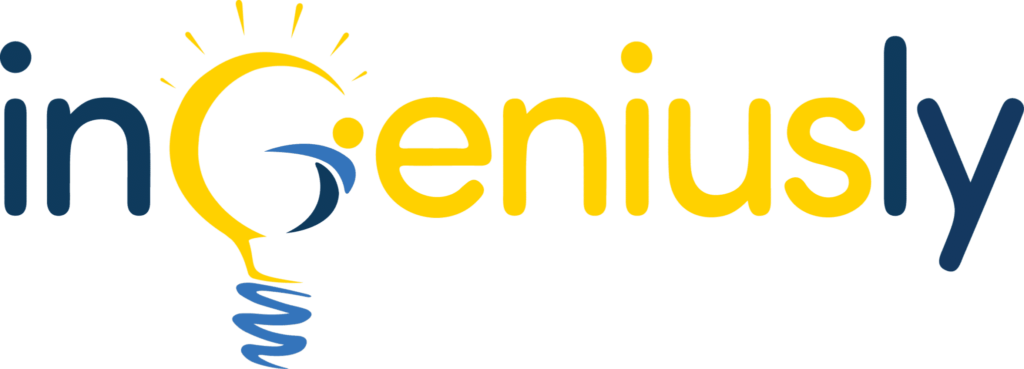Languages, Boxers and Apples
Most people, at a certain point in their life, decide to learn a second language. In non-English-speaking countries, this is basically a must. English is the lingua franca to be able to communicate outside of one’s own country: you must learn it.
Nonetheless, also as an English speaker, knowing an extra language can be an advantage for your work life, travels, interests, and so on. It can be the reason to ask for a raise, or to take on more responsibilities in your company. It can help you to find the secret spots of your holiday destination, from blogs in that language or from conversations with local people. It allows you to browse forums, read books or magazines and find information available only in other languages for your hobbies.
Looking at it from this perspective, everybody should learn as many languages as possible. What happens, though, is that even people who are initially very proactive and excited at the idea of learning a new language often hit a wall and give up after a short while.
Maybe it never happened to you (yeah, right!). Maybe it happened with something other than a language. Maybe you just want to help a friend.
Whichever the case, understanding the possible reasons leading to giving up is the key to start changing.
To do that, let’s go back to the title of this post. What do languages, boxers and apples have to do with one another?
The WHW sequence: bringing the golden circle of communication to languages
You might have heard of the Golden Circle by author and communication expert Simon Sinek. In his most famous book (I will write the title in a few lines, because it is a real spoiler) and in his famous TEDx talk, he talks about enterprise communication. He sees it as consisting of three concentric circles: What, How and Why.
Even if all these elements are important when communicating on any level – with customers, suppliers, partners, employees, and so on – Sinek states that most companies go about it with the wrong priority level.
To put it simply:
- All companies know well what they do,
- most companies know well how they do it,
- but, unluckily, most companies don’t know, have forgotten or aren’t able to communicate why they do what they do.
As you might have imagined from how the list is formulated – and from the title of the book: Start with Why – the “reason why” is the most important element to communicate.
In his TEDx talk, Sinek brings an unmistakable example: Apple Inc. (we now finally get to the apples mentioned in the title). The way Steve Jobs handled communication was particularly in line with Sinek’s ideas and allowed Apple to become one of the most successful technology companies in the world. One that doesn’t just make products, but communicates the Why behind its solutions, much more than the How or the What. And it wins the hearts of its customers by doing so.
In another example, he says that Dr. Martin Luther King “gave the I Have a Dream speech, not the I Have a Plan speech!”. And this brings us to the boxers in the title, two in particular: Mike Tyson and Evander Holyfield.
You might have heard the famous quote by Tyson: “everyone has a plan until they get punched in the mouth”. What many people don’t know is the context that inspired these words. It was the answer he gave to a journalist in 1997 before his fight against Holyfield, a much more strategic and smarter fighter. A boxer with a fight plan opposite to Tyson. A boxer that had beaten Tyson only six months before.
Tyson was right: Holyfield could not follow every step of his fight plan after punches started landing – unless he had planned to lose a piece of ear to Tyson’s bites.
But Tyson lost anyway, disqualified for the repeated unfair behaviour.
Besides the different opinions that some may have about the fight and about Holyfield’s own behaviour, one thing is certain. Holyfield was unable to stick to his original plan. He had to adapt to the unpredictability of his adversary, in an incredible way. He had to find the strength and motivation to go beyond a pain that was unexpected and quite shocking. He had to go on fighting.
How did he do it? By keeping his ultimate goal in mind (fame, glory and the WBA Heavyweight Championship: his Why for being in the ring), by identifying clearly the way to reach it (beating his adversary – his How) and by being flexible on the specific actions (adapting the plan, the sequences of hits, the punches – the What of that specific moment).
The missing link: Gardner and Lambert, a theory of motivation
As you have seen, motivation – the reason why – is essential in both how you communicate and how you strategise, act and react.
At this point, it’s important to make a distinction between two aspects of motivation: the inspiring and the causal side. The first, motivation in the sense of enthusiasm, passion and energy, is clearly important in anything you do, but it normally won’t be enough on its own.
The second, the analysis of what moves you, your goals and your values, is going to bring you much further. The best is, clearly, the sum of the two.
Focusing on the causal side, Robert Gardner and Wallace Lambert published, in 1972, a theory on the types of motivation that can guide someone’s language learning process. Trying to answer the fundamental question of why anybody would start learning a new language, they came up with two answers:
- instrumental motivation: language as a means to a goal, a tool to get something else;
- integrative motivation: language as a core motivation, to make it a part of their identity, to become integrated into a community.
Instrumental motivation is the most common. Think of students learning a language to get good marks or to make their parents proud. Or an employee approaching a new language in order to ask for a raise.
Integrative motivation, on the other hand, is the core motivation. It’s the one you can spot in toddlers when they learn their first words and sentences. They want to be like their parents and talk like them. They want to become part of a community, in a certain sense, that they cannot access without learning how to speak that language.
The desire to be included through the language can be spotted also within one’s own mother language. You might have lived this firsthand. Have you ever taken part in an event, a conference or a course where the use of a specific language entailed a set of notions and concepts that went beyond your knowledge at the time?
In such a case, if the knowledge was required from you (for university for example) you probably used instrumental motivation to enrich your vocabulary. On the other hand, if the topic really interested you and you wanted to “join that community”, integrative motivation pushed you to learn the necessary words and concepts.
How to FINALLY learn that language!
In the video, Giulia Remondino, author of Genius by Choice and CEO and Founder of inGeniusly, will tell you a bit more about the two types of motivation.
Which one do you think is more effective to learn a language?
Which one did you use until now?
The nice thing about instrumental and integrative motivation is that one doesn’t exclude the other. Actually, they reinforce one another!
Most people start learning a language as a means to a different end: a school requirement, a raise, a relationship… The most effective language learners, though, manage to transform their initial instrumental motivation into an infatuation, an unconditional passion for that language, the culture and tradition linked to it.
Research demonstrated that if you manage to get to the stage of integrative motivation, the long-term success of second language learning is much higher than only with instrumental motivation.
How can you help or improve the natural process to transform a must into an infatuation? Interest is key, but, naturally, it is less probable to manage this transformation if what you learn feels too difficult for you.
But why should a language feel difficult for you and easy for someone else? Have you ever heard of the concept of cognitive profile?
Each and every person has a specific cognitive profile, made of many elements, that makes some learning techniques and approaches more effective and others almost useless.
Understanding your Cognitive Profile will help you avoid barriers and overcome problems that you might find during the learning process. By applying a method tailored to your characteristics, you will tackle each topic with the most effective techniques for your profile.
This will give you a better chance to reach that tipping point, where integrative motivation takes over from pure instrumental motivation.
At inGeniusly, we work with you to:
- understand your Cognitive Profile
- implement strategies to exploit it best
- help you to integrate the best of your, and other, cognitive styles into your approach
Watch the video to find out more about instrumental and integrative motivation, and to get some tips that can help you transform the first into the second.
Enjoy, and don’t forget to subscribe to our YouTube channel to receive more tips on how to excel at work, exams, and languages!







